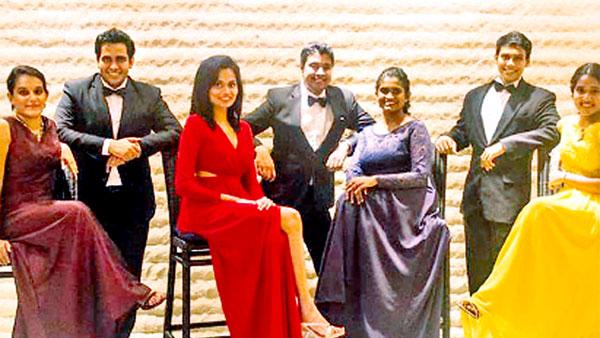
It was indeed a very special evening, Monday, 21 November, when we were treated to a Concert of Opera singing, at the Russian Cultural Centre.The Concert was solely due to the effort of a professional Opera singer, British born Barbara Segal, who has been quietly living for years in Matara, in Sri Lanka, which she refers to as “My Second Home’. She has been assisted to make a success of this laudable venture by the brilliant pianist, Menaka de Fonseka Sahabandu. The soloists were young artistes who sang brilliantly and appeared to know the story of the Opera from which they sang the Aria; this, I was told had been because Barbara Segal had explained the context of the Aria and its meaning, which the singers were able to convey to us by the manner in which they performed. This undoubtedly, is a tremendous achievement. Everyone of the soloists needs to be congratulated, they were indeed brilliant and we should be proud of them. The soloists were, Joanne Aloysius Rajiyah, Nipuni Siyambalapitiya, Samali Liyanage, Rachel Halliday, all Sopranos, Niran de Mel (Tenor), Nishantha Warnakulasuriya (Baritone) and Laknath Seneviratne (Baritone). I was introduced to the Opera by the late great intellectual, Dr. Lal Jayawardena. He took me to my first opera when I was serving in Brussels in 1984, and I must confess, I became an absolute opera buff ever since. I visited the most beautiful Opera House in the world in Paris, many times.
A word about Opera would not be out of place in this short appreciation of this art form.Opera is an art where singers and musicians perform a dramatic work combining text (libretto) and musical score, usually, in a theatrical setting. In traditional opera, singers do two types of singing, i.e. recitative, a speech-inflected style, and Arias, a more melodic style. Opera incorporates many of the elements of spoken theatre, such as, acting, scenery, and costumes, and sometimes includes dance. The performance is typically given in an opera house, accompanied by an orchestra or smaller musical ensemble, which since the early 19th century has been led by a conductor. Opera is part of the Western classical music tradition. It started in Florence, Italy, at the end of the 16th century, and soon spread through the rest of Europe. Each country established its own national tradition in the 17th century. In the 18th century, Italian opera continued to dominate most of Europe (except France), attracting great composers, such as, George Frideric Handel. Opera seria was the most prestigious form of Italian opera. The most renowned figure of the late 18th-century opera is Wolfgang Amadeus Mozart, who began with opera seria, but is famous for his Italian comic operas, especially, The Marriage of Figaro (Le nozze di Figaro), Don Giovanni, and Così fan tutte, as well as The Magic Flute (Die Zauberflöte), a landmark in German tradition. The mid-to-late 19th century was a ‘golden age’ of opera, led and dominated by Richard Wagner in Germany, and Giuseppe Verdi in Italy.
The popularity of opera continued through the verismo era in Italy, and contemporary French opera through to Giacomo Puccini and Richard Strauss, in the early 20th century. With the rise of recording technology, singers such as Enrico Caruso, Pavarotti and Maria Callas became known to much wider audiences that went beyond the circle of opera fans.
Since the invention of radio and television, operas were also performed on (and written for) these mediums. Beginning in 2006, a number of major opera houses began to present live high-definition video transmissions of their performances in cinemas, all over the world.We have had our own form of this tradition. Maname and Sinhabahu are the best examples of this art form. I hope our composers treat us to many more such plays/’Operas’.
